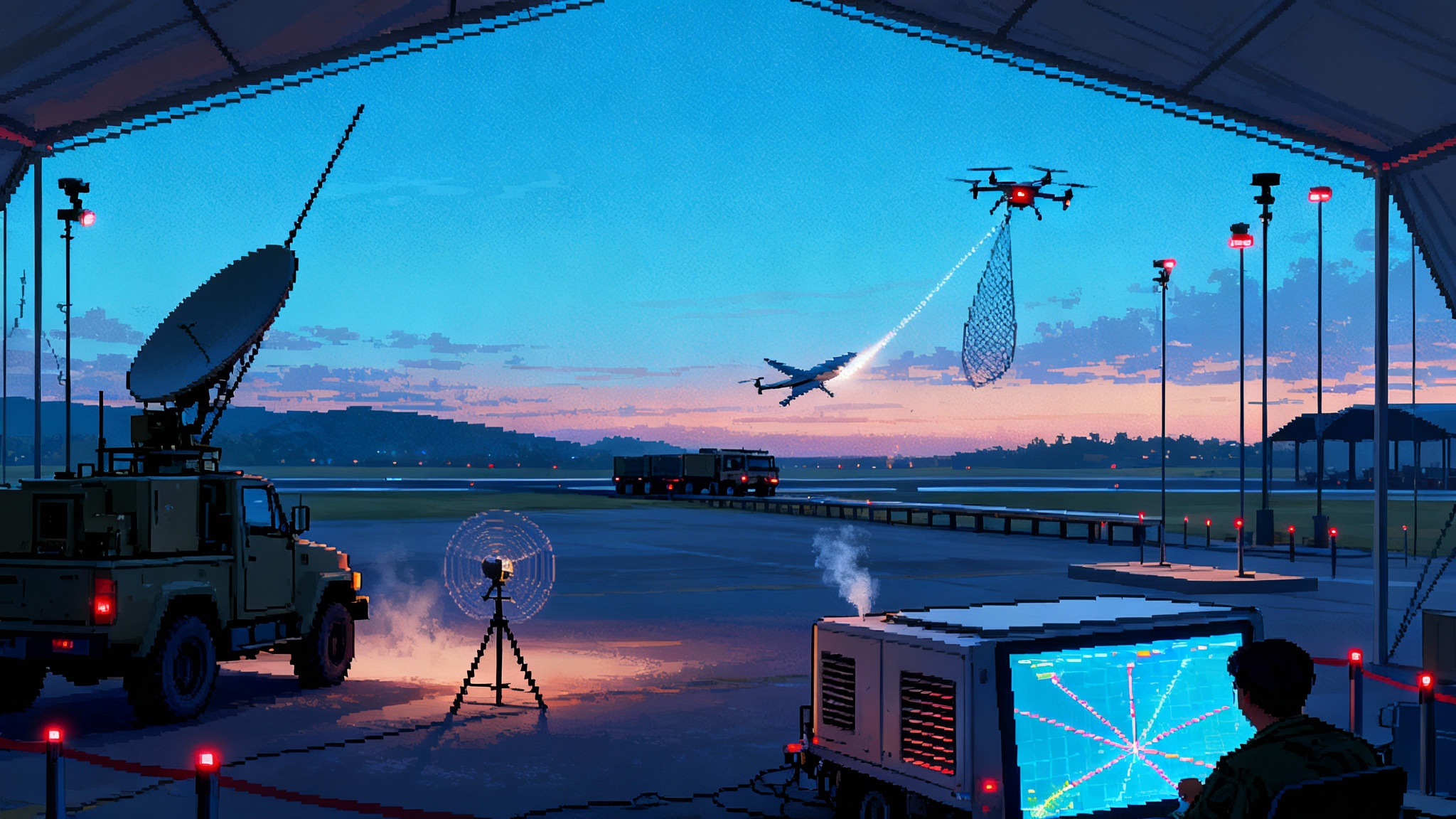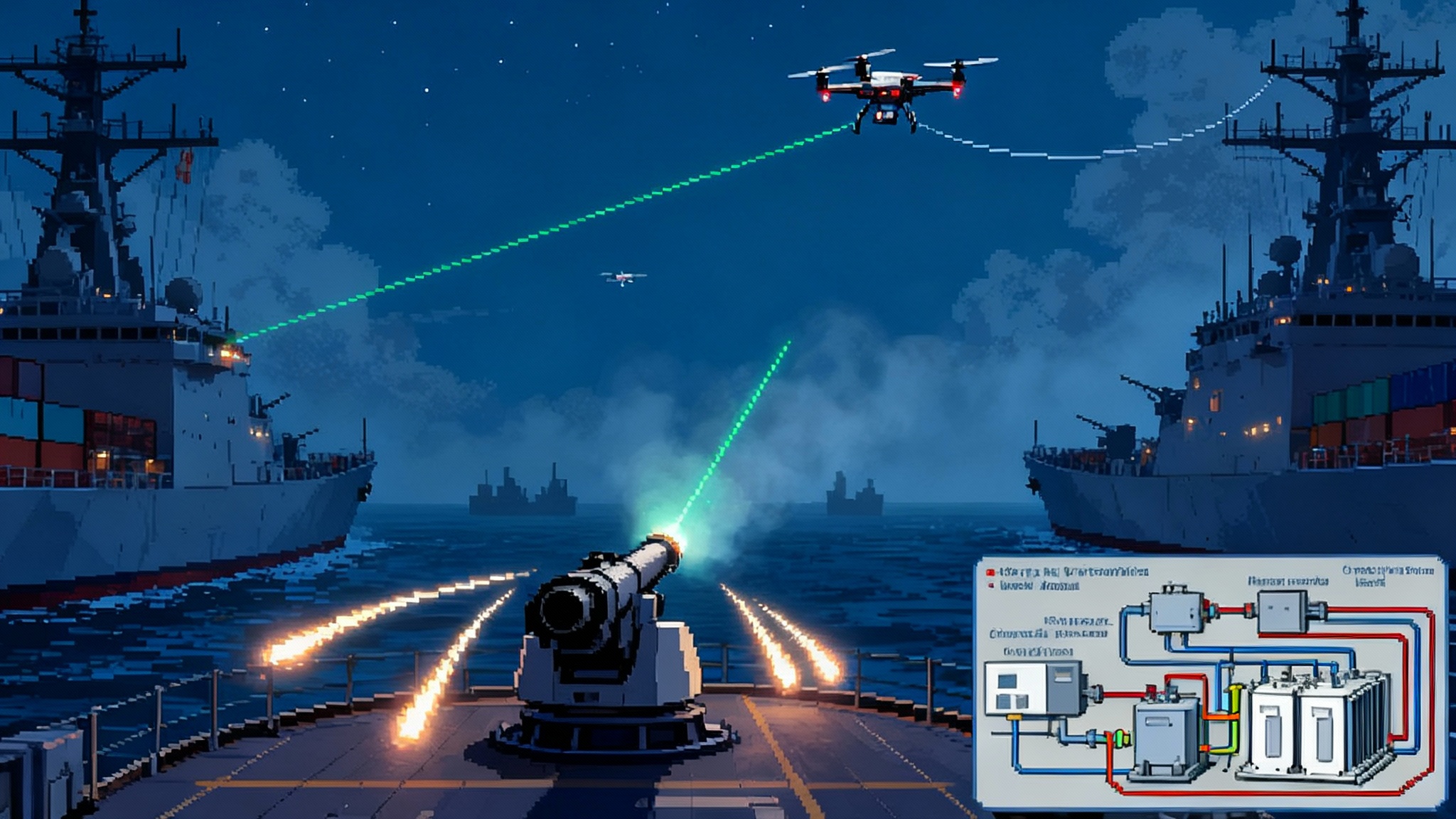After Poland’s Incursions, NATO Bets on Drone-on-Drone Defense
After Russian drones violated Polish airspace, Warsaw turned to Kyiv to learn how to stop them. That pivot hints at NATO’s next chapter in air defense, one built around sensor fusion, AI, electronic warfare, low-cost interceptors, and microwaves.

Poland’s wake-up call
Poland just moved from theory to practice. After a wave of Russian drones cut into Polish airspace on the night of September 9 to 10, Warsaw asked Kyiv to teach its forces how to beat drones with drones. Ukraine confirmed it will train Polish units in a full counter-drone ecosystem that includes tracking, jamming, and interception, a rare reversal where a non-NATO partner mentors a NATO frontline state. The announcement is a signal to the entire alliance that the drone war has spilled across borders and that the old missile-first playbook needs a rewrite. Reuters reported the plan for Ukrainian instruction of Polish forces following the incursion, including training on interceptor drones and integrated tracking and jamming. Ukraine to train Polish forces on drone defense.
For years, NATO’s integrated air and missile defense has centered on hard-kill missiles cued by radar networks and airborne sensors. That architecture is still essential for cruise and ballistic missiles. But against large volumes of low-cost uncrewed systems, it is too expensive and often too slow. Even a single night of mixed one-way attack drones and decoys can force a defender to expend missiles that cost hundreds of thousands to millions of dollars while the attacker burns through platforms that cost in the tens of thousands. Poland’s experience, and Ukraine’s battlefield learning, are pushing NATO toward a layered drone air-defense stack built for attrition and automation.
From missiles to a drone air-defense stack
Think of the shift like the move from perimeter firewalls to a cybersecurity stack. No single box stops everything. Multiple cheap, fast, networked layers buy time and trade pennies for dollars. NATO planners and national air defense commands are converging on five layers that work together.
Layer 1: Sensor fusion that sees small
Drones are hard to see. They fly low, they are small, and they often blend into clutter. So the first change is sensing. Classic air defense radars are being fused with short-range low-power radars, passive RF sensors that listen for control links, acoustic arrays that hear engine signatures, and electro-optical and infrared cameras. The point is not a perfect picture from any one sensor. It is to combine many imperfect pictures into a reliable track. That fusion now extends down to municipal cameras, power-plant security sensors, and even stadium counter-drone kits. In practical terms, that means a target can be detected by RF, confirmed by radar, classified by an AI model on an EO camera, and then handed off to an interceptor in seconds.
Sensor fusion also reduces the electronic warfare fog. If a drone cuts its link or switches to preprogrammed GPS guidance, passive RF goes quiet. Radar and optical pick up the slack. If GPS is jammed and the drone starts to drift, the erratic motion itself becomes a classification cue. The more channels you observe, the less the attacker can hide.
Layer 2: AI-enabled tracking and battle management
Volume is the enemy. Human operators cannot maintain track quality on dozens or hundreds of small contacts that pop in and out of clutter. AI models trained on drone kinematics and sensor signatures now assist across the chain. They filter false positives, maintain tracks through short occlusions, and propose target groupings so that effectors engage swarms efficiently. The software sits inside modern command-and-control toolchains and on edge processors near sensors. Good teams are learning to trust the cues but keep a human on the loop for firing decisions.
Crucially, the battle manager must know the cost table in real time. If the contact is a decoy or a foam airframe carrying no explosive, it should not draw a million-dollar shot. If it is a fast jet-powered drone heading for critical infrastructure, the manager must quickly assign higher performance interceptors or cue a high-power microwave if available. That is where Poland’s and Ukraine’s operational data is gold. They have seen enough raid compositions to teach the algorithms what is likely real and what is bait.
Layer 3: Electronic warfare as a service
Jamming used to be a niche skill. Now it is a utility. Portable and vehicle-mounted jammers disrupt control links and satellite navigation, and more advanced systems spoof GNSS to pull drones off track. Not every drone will fall. Many now fly preprogrammed routes and have hardened navigation. But EW complicates the attacker’s calculus and creates windows for other layers to work. The operational trick is zoning. You want to shape where drones go without blinding your own sensors or disrupting civilian systems. That means power control, narrow beams, geofencing, and strict procedures between police, military, and air traffic control. Done right, EW acts like a goalkeeper that tips the ball to defenders instead of trying to score on its own.
Layer 4: Low-cost interceptor UAVs
This is the heart of the new playbook. Interceptor drones combine speed, small warheads, and AI-assisted guidance to hunt and collide with or blast short-range munitions at incoming drones. They are cheap enough to be used in numbers and good enough to go after targets that guns struggle to hit, especially when the targets are low, fast, and maneuvering. Ukraine has shown that FPV-class interceptors guided by thermal or optical cues can close the cost gap and pull the pressure off missile batteries.
There are two models emerging:
- Expendable interceptors. Think of them as aerial bullets. They carry small fragmentation or continuous-rod charges or simply ram the target. They are fast to build, trainable on simulators, and logistically simple.
- Recoverable air guards. These carry nets, directional blast charges, or even grapples, then parachute or land for reuse. They cost more, but they help training and reduce resupply burden.
Either way, the key is autonomy at the edge. When jamming is heavy or links are contested, the interceptor must follow a track and execute the intercept locally, then confirm the kill back to the network when it can.
Layer 5: High-power microwave and other directed energy
High-power microwave systems fire wide beams that can disable the electronics of multiple small drones at once. For swarm defense, that changes the math. Weather and line-of-sight still matter, and power supplies are nontrivial. But HPM is improving fast and suits fixed sites, airfields, ports, and mobile convoys. It does not care about a drone’s speed if the beam coupling is sufficient. As lasers mature in parallel for precise burns against optics and rotors, commanders will have more non-kinetic shots to conserve missiles for cruise and ballistic threats.
NATO has been integrating and testing counter-drone technologies and interoperability for several years, including live trials where dozens of sensors and effectors are networked and stress-tested. One notable series brought together 450 personnel from Allied and Partner nations to plug-and-play sensors, jammers, and interceptors so they could work together instantly. That effort, run by NATO’s Communications and Information Agency, included Ukraine as a first-time participant and focused on connecting commercial and military tech in realistic scenarios. The exercise is a useful window into how a stack approach becomes real. NATO tests counter-drone tech during an interoperability exercise.
The Shahed or Geran-3 effect
Reports from Ukraine through 2025 point to the growing presence of a faster, jet-powered variant of Russia’s Shahed-style one-way attack drone, commonly called Geran-3 and linked to Iran’s Shahed-238 design. The details vary by raid, but the trend is clear. As the platform gets faster and tougher to jam, the engagement window shrinks and the cost exchange gets worse for defenders who rely only on missiles and guns.
Here is what changes when the drone accelerates and adds hardened navigation:
- Shorter warning. Low-altitude, high-subsonic approaches can cut warning times from minutes to seconds for point defenses, especially in urban clutter or terrain masking.
- Tougher tracks. A faster drone forces higher update rates for radars and trackers. You need better cueing to keep a solid track across sectors and hand off to the right effector.
- Fewer easy jams. If the drone can ride inertial and terrain or use hardened GNSS, simple jamming will not be enough. You still jam to shape the route, but you need a kinetic or directed-energy finish.
- Guns struggle. Optically guided guns and proximity shells remain valuable, but high-speed approaches at night or in bad weather are challenging. The hit window is short and collateral risk rises in cities.
This is why drone-on-drone interception is ascendant. A small, fast, attritable interceptor that can meet speed and climb requirements can take a clean shot at the jet-powered target without asking a Patriot battery to do the job. The interceptor can carry a focused blast that minimizes fragmentation spread, a key requirement for urban defense. And when bandwidth is scarce, onboard autonomy can navigate to a predictive intercept point using track data from the network.
Procurement priorities are shifting
The alliance is not abandoning missiles. It is reallocating them. The next wave of procurement is about mass, modularity, and software.
- Cost curves. Defenders need to spend pennies to defeat dollars. That means buying thousands of interceptor drones and dozens of HPM units so that expensive missiles are reserved for cruise missiles and aircraft. Expect procurement targets to talk about price-per-kill and cost-per-raid, not just unit cost.
- Replicator-style mass. The U.S. Replicator initiative has pushed the idea of fielding large numbers of small, smart, attritable systems quickly. NATO countries are adopting similar thinking, pooling buys of common airframes, radios, and warheads, with national variations in software and packaging. The goal is a supply chain that can surge and a fleet that can be updated like a smartphone.
- Software first. The battle manager, fusion services, and autonomy stacks matter as much as the airframes. Without open interfaces, you cannot mix a Dutch radar, a Polish EO camera, a Lithuanian jammer, and a French interceptor and have them work on day one. Contracting should insist on open standards, published APIs, and government-owned data rights for key models.
- EW at scale. Every brigade-sized formation and every major city should have layered electronic protection. That includes training, spectrum deconfliction, and smart power management so your own sensors and comms stay effective while you jam.
- Directed energy pilots. High-power microwave is ready for expanded trials at airfields, ammo depots, ports, and power stations. Lasers deserve continued investment where clear air and line-of-sight are predictable. Both should be integrated into the same command-and-control that runs interceptors and missiles.
- Civil-military integration. Many of the sensors that spot drones first are civilian. Contracts with utilities, airports, and rail hubs can bring their feeds into the fusion layer with the right privacy and safety rules.
What Poland and Ukraine will teach the alliance
Poland’s training with Ukraine will not be theoretical. Expect at least four practical outcomes that other allies will copy.
-
A standing drone ops cell. A small, 24-7 team that fuses feeds, runs the AI cues, and makes the call on which effector engages which target. The procedures need to be drilled with air policing and civil aviation so there are no surprises when the phone rings at 2 a.m.
-
Interceptor squadrons, not just batteries. Units dedicated to drone-on-drone engagements, with their own logistics, simulators, and maintenance. Pilots can be trained in months using commercial controllers and VR, and the aircraft can be built on commercial supply chains with military-grade software.
-
EW zoning maps for cities and corridors. Preplanned jamming zones with power settings and frequencies that are safe for hospitals, airports, and emergency services. When a raid comes, the switch flips and the air picture stays clean.
-
A common test playbook. Quarterly raid rehearsals that simulate a mix of decoys, slow prop-driven drones, and fast jet-powered drones. The rehearsal must include public warning, airspace control, and post-raid recovery so that lessons move from the lab to the street.
The risks and how to manage them
Acceleration has tradeoffs. Three risks stand out.
- Fratricide. Interceptor drones can collide with friendly aircraft or be drawn to the wrong emitter. Mitigation is geofencing, transponder-based friend-or-friend logic for interceptors, and hard no-go bubbles around crewed assets.
- Collateral effects from EW and HPM. Jammers can affect emergency comms if poorly configured. HPM can cause unintended electromagnetic effects in nearby electronics. The cure is disciplined zoning, power control, site surveys, and certification.
- Legal and insurance gray zones. Drone defense in cities touches civil aviation and public safety law. Nations should pre-clear authorities for military support to civil authorities during raids and set compensation schemes for incidental damage to avoid hesitation when seconds matter.
What changes next
Over the next 12 to 24 months, expect to see a visible rebalancing across the alliance.
- More small radars and cameras sprout on rooftops and along highways. Many will be portable systems that can be moved as threat axes shift.
- Armories stock pallets of interceptor drones next to 155 mm shells. Units will rotate through live intercept events the way they shoot gunnery tables.
- Airbases and critical infrastructure add at least one directed-energy pilot system, with HPM prioritized for swarm defense.
- Command posts display a cost-per-raid dashboard along with the classic air picture, so leaders see if they are winning the budget war as well as the air war.
- Procurement documents read like software roadmaps, with timelines for model updates, fusion features, and new effectors.
The Polish request to learn from Ukraine is not a one-off. It is the first visible stitch in a new fabric of air defense where missiles, drones, microwaves, and code work as one. NATO built the world’s most complex missile defense network for the cruise and ballistic era. The drone era demands the same discipline with different economics. The alliance is now building that stack. The sooner it scales, the cheaper and safer Europe’s skies will be.

